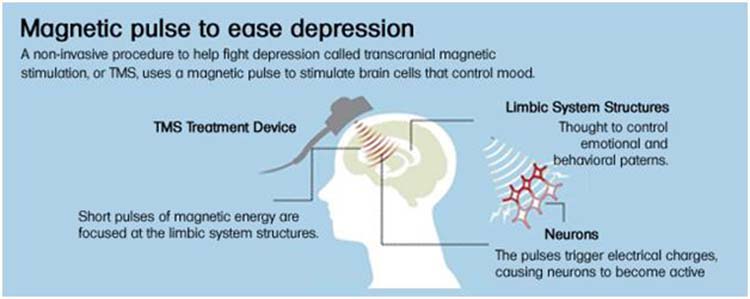What is Transcranial Magnetic Stimulation and How Does It Work?
Transcranial Magnetic Stimulation (TMS) is a procedure that stimulates the brain's nerve cells to reduce the level or severity of depression one suffers. It is done using magnetic fields.
Up till date, there is no scientific explanation on how TMS relieves depression. However, it is generally understood that the TMS works by stimulating the nerve cells in the areas where the brain controls mood. As the magnetic fields enter the brain during a TMS treatment, they generate small electrical currents that activate the inactive brain cells and help release brain chemicals like dopamine, serotonin and norepinephrine, which jointly help reduce depression symptoms.
Though the exact workings of this therapy are still unknown to many, yet research on it is plenty. In fact, the Cochrane Review points to one particular study in which 14 TMS sessions were conducted over a 21 week period to test for fibromyalgia. The test suggest that fibromyalgia sufferers can experience reduction of pain and better quality of life in the long run.
Like what you read? Pass it around:



